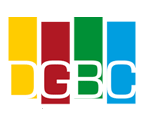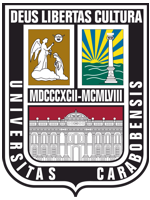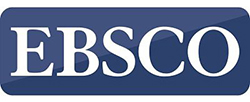La integración de aplicaciones web en programas de aprendizaje integrado de contenido y lengua (CLIL) en la educación superior: contexto ucraniano
DOI:
https://doi.org/10.46502/issn.1856-7576/2024.18.04.7Palabras clave:
desarrollo de competencias lingüísticas y temáticas, entorno digital de aprendizaje, programas AICLE en la enseñanza superior, aumento de la motivación.Resumen
El estudio analiza el impacto de las aplicaciones basadas en la web en la eficacia del aprendizaje integrado de contenidos e idiomas (AICLE) en la enseñanza superior en el contexto de la globalización y el creciente papel del multilingüismo en la Unión Europea.
El estudio pretendía determinar el impacto de las aplicaciones basadas en la web en el desarrollo de las competencias lingüísticas de los estudiantes y su implicación en el proceso de aprendizaje en AICLE. Para lograr este objetivo, se realizó una revisión sistemática de la literatura científica publicada en las principales bases de datos científicas de 2019 a 2024.
Los resultados del estudio demuestran que la integración de aplicaciones basadas en la web en el proceso de enseñanza AICLE tiene un impacto positivo en el desarrollo de las competencias lingüísticas de los estudiantes y aumenta su motivación para aprender. Sin embargo, aplicar con éxito las tecnologías web requiere una formación especial y una adaptación al entorno de aprendizaje.
Las conclusiones del estudio subrayan la importancia de seguir estudiando el potencial de las aplicaciones web en el contexto del AICLE y de desarrollar estrategias eficaces para integrarlas en el proceso educativo.
Citas
Adam, C. (2019). Scolarisation bilingue et appropriation d'une langue (minoritaire). Revue TDFLE, 1(1). https://revue-tdfle.fr/articles/actes-1/134-scolarisation-bilingue-et-appropriation-d-une-langue-minoritaire
Amor, M. I., Tinedo-Rodríguez, A. J., & Osuna-Rodríguez, M. (2023). The Interaction between Language Skills and Cross-Cultural Competences in Bilingual Programmes. Languages, 8(3), 181. https://doi.org/10.3390/languages8030181
Babault, S., Grabowska, M., & Rivens Mompean, A. (2022). Apprentissage formel et informel des langues. Quelles articulations? Recherches en didactique des langues et des cultures. The Acedle Notebooks, 20(20-1). https://doi.org/10.4000/rdlc.11780
Banegas, D. L., & Zappa-Hollman, S. (Eds.). (2023). The Routledge handbook of content and language integrated learning. Taylor & Francis. https://doi.org/10.4324/9781003173151
Barçante, M. (2020). Planejamento e Implementação de Curso Online CLIL no Centro Estadual de Educação Tecnológica Paula Souza: vislumbrando EMI. Revista CBTecLE, 4(2), 116-126. https://revista.cbtecle.com.br/CBTecLE/article/view/281
Boichenko, M., Churychkanych, I., Kulichenko, A., Shramko, R., & Rakhno, M. (2023). Mind maps to boost the learning of English as L2 at higher education institutions in Ukraine. Amazonia Investiga, 12(70), 229-240. https://doi.org/10.34069/AI/2023.70.10.21
Budko, L., Maksymovych, G., & Shulga, T. (2024). Content and language integrated learning model in teaching a foreign language at a non-language university. Editorial Helvética. https://dspace.nau.edu.ua/handle/NAU/65222
Byrko, N., Tolchieva, H., Babiak, O., Zamsha, A., Fedorenko, O., & Adamiuk, N. (2022). Training of teachers for the implementation of universal design in educational activities. AD ALTA: Journal of Interdisciplinary Research, 12, 117-125. http://surl.li/kjizuh
Chashechnikova, O., Odintsova, O., Hordiienko, I., Danylchuk, O., & Popova, L. (2024). Innovative technologies for the development of critical thinking in students. Amazonia Investiga, 13(81), 197–213. https://doi.org/10.34069/ai/2024.81.09.16
Cortier, C., & Puren, L. (2008). French and regional and/or minority languages: a difficult convergence. Benchmarks. Research in teaching French as a mother tongue, (38), 63-80. https://journals.openedition.org/reperes/390
Dalton-Puffer, C., Hüttner, J., & Llinares, A. (2022). CLIL in the 21st Century: Retrospective and prospective challenges and opportunities. Journal of Immersion and Content-Based Language Education, 10(2), 182-206. https://doi.org/10.1075/jicb.21021.dal
DelliCarpini, M. (2021). Developing the C in content and language integrated learning: Teacher preparation that builds learners' content knowledge and academic language through teacher collaboration and integrated pedagogical training. In International perspectives on CLIL (pp. 217-237). Cham: Springer International Publishing. https://link.springer.com/chapter/10.1007/978-3-030-70095-9_11
Destari, D., & Kusumawati, E. A. (2023). The Digital Teaching and Learning on Islamic Education Institutions and Their Sustainability in the New Normal Era. Aqlamuna: Journal of Educational Studies, 1(2), 218-243. https://doi.org/10.58223/aqlamuna.v1i2.251
Díez-Pascual, A. M., & Díaz, M. P. G. (2020). Audience response software as a learning tool in university courses. Education Sciences, 10(12), 350. https://doi.org/10.3390/educsci10120350
Fakhar, H., Lamrabet, M., Echantoufi, N., & Ajana, L. (2024). Towards a New Artificial Intelligence-based Framework for Teachers' Online Continuous Professional Development Programmes: A Systematic Review. International Journal of Advanced Computer Science & Applications, 15(4). https://doi.org/10.14569/ijacsa.2024.0150450
Galán-Rodríguez, N. M., Fraga-Viñas, L., Bobadilla-Pérez, M., Gómez-Sánchez, T. F., & Arcas, B. R. (2024). Methodological training in plurilingual education in the Spanish Higher Education training programmes: are pre-service teachers ready for CLIL? Formación metodológica en educación plurilingüe en los programmeas de Educación Superior en España: ¿Está el profesorado en formación preparado en AICLE? Revista de Educación, 403, 31-58. https://doi.org/10.4438/1988-592X-RE-2024-403-611
Hegde, M. N., Kanchan, J., Ganaraj, K., Madhu, R., Shetty, S. S., & Rajatha, K. (2022). Digital Tools to Promote Formative Assessment in the Classroom. In EdTech Economy and the Transformation of Education (pp. 53-64). IGI Global. https://doi.org/10.4018/978-1-7998-8904-5.ch004
Herrera, R. M. S. (2024). CLIL Methodology as an Educational Approach to Support Productive Skills for EFL. Lecturas: Educación Física y Deportes, 29(311). https://doi.org/10.46642/efd.v29i311.7266
Holdsworth, P. (2003). Promoting language learning and linguistic diversity in Europe. Sèvre International Education Reviews, (33), 107-115. https://journals.openedition.org/ries/1736
Hubal, H. M. (2023). Improving references and footnotes in mathematical and other texts by creating macros in the LaTeX programming language. International Journal on Information Technologies & Security, 15(3), 15-22. https://doi.org/10.59035/fbcy3490
Jiménez-Benavides, A. V. (2023). El aprendizaje integrado de contenido con el lenguaje en el aprendizaje de inglés. Reflexiones docentes. Revista De Investigaciones De La Universidad Le Cordon Bleu, 10(1), 23-25. https://doi.org/10.36955/RIULCB.2023v10n1.003
Junior, J. B. B. (2020). Assessment for learning with mobile apps: exploring the potential of quizizz in the educational context. International Journal of Development Research, 10(01), 33366-33371. https://www.journalijdr.com/assessment-learning-mobile-apps-exploring-potential-quizizz-educational-context
Kaewkamnerd, K., Dibyamandala, J., Mangkhang, C., & Khuankaew, S. (2024). Building Autonomy in English Language Learning: Integrating Digital Technology with CEFR-CLIL in Thai EFL Education. Korean Journal of English Language and Linguistics, 24, 660-688. https://doi.org/10.15738/kjell.24..202407.660
Kic-Drgas, J., Woźniak, J., Bocanegra-Valle, A., John, P., & Mertelj, D. (2024). Discrepancies between the institutionally offered special language teaching and the needs of special language teachers. A methodological approach. Linguistic meetings in Wrocław, (24), 103-116. https://www.ceeol.com/search/article-detail?id=1225283
Kuhna, R. (2019). Taking into account the national curriculum in Finnish French textbooks for primary education (Master's thesis). University of Jyväskylä. https://jyx.jyu.fi/handle/123456789/63358
Kukulska-Hulme, A., Friend Wise, A., Coughlan, T., Biswas, G., Bossu, C., Burriss, S. K., ... & Whitelock, D. (2024). Innovating Pedagogy 2024. The Open University. https://oro.open.ac.uk/99053/
Leleka, V., Ketsyk-Zinchenko, U., Petrenko, N., Potapchuk, N., & Syroiezhko, O. (2024). Innovative technologies for healthy education: a practical guide for educational institutions. Amazonia Investiga, 13(81), 214–233. https://doi.org/10.34069/ai/2024.81.09.17
Li, D., & Zhang, L. (2022). Exploring teacher scaffolding in a CLIL-framed EFL intensive reading class: A classroom discourse analysis approach. Language Teaching Research, 26(3), 333-360. https://doi.org/10.1177/1362168820903340
Marsh, D., & Pérez, W. D. (2024). Realising interdisciplinary learning environments through CLIL. In Transnational Approaches to Bilingual and Second Language Teacher Education (pp. 15-32). Routledge. https://doi.org/10.1002/9781405198431.wbeal0190.pub2
Martens, L., Mettewie, L., & Elen, J. (2023). Looking for the i in CLIL: A literature review on the implementation of dual focus in both subject and language classrooms. Nordic Journal of Language Teaching and Learning, 11(3), 255-277. https://doi.org/10.46364/njltl.v11i3.1155
Merchán Cedillo, M. B., & Mora Aguilar, L. F. (2024). The use of clil methodology to improve the English vocabulary of students (Bachelor's thesis), Machala: Universidad Técnica de Machala. https://repositorio.utmachala.edu.ec/handle/48000/22832
Morgado, M., Gómez, L. V., & Calvete, M. (2019). Aprender (n) uma língua estrangeira no ensino superior: perceções de empregadores e alunos. Millenium-Journal of Education, Technology, and Health, (4e), 81-89. https://revistas.rcaap.pt/millenium/article/view/18037
Myronenko, T., Dobrovolska, L., Shevchenko, I., & Kordyuk, O. (2024). Challenges and sustainability of CLIL implementation in Ukrainian educational institutions. Amazonia Investiga, 13(77), 53-65. https://doi.org/10.34069/AI/2024.77.05.4
Navarro Henares, T. (2020). The effectiveness of gamification tools to teach and learn EFL: A survey-based study on L1 Spanish-Catalan secondary school students (Master's thesis). University of the Balearic Islands, Centre for Postgraduate Studies. http://surl.li/oexzhq
Nikula, T., Dalton-Puffer, C., Llinares, A., & Lorenzo, F. (2016). More than content and language: The complexity of integration in CLIL and bilingual education. Conceptualising integration in CLIL and multilingual education, 101(1). https://doi.org/10.21832/9781783096145-004
O'Connell, A. M., & Chaplier, C. (2021). Les langues de spécialité dans l'enseignement supérieur en France: un exemple de littératie enseignante dans le domaine de l'anglais des sciences. Education & didactique, 85-102. https://shs.cairn.info/revue-education-et-didactique-2021-2-page-85?lang=fr
Papaja, K. (2023). Content and Language Integrated Lerning (CLIL) in European Higher Education. Multidisciplinary Journal of School Education, 12(1). https://doi.org/10.35765/mjse.2023.1223.11
Paran, A. (2013). CLIL: Content and Language Integrated Learning. ELT Journal, 67(1), 137–141. https://academic.oup.com/eltj/article-abstract/67/1/137/438609
Paweloszek, I., Kumar, N., & Solanki, U. (2022). Artificial Intelligence, Digital Technologies and the Future of Law: Literature Review. Futurity Economics&Law, 2(2), 35–53. https://doi.org/10.57125/FEL.2022.06.25.03
Petit, K. (2020). Immersed in “Authentic Ireland”: A Critical Sociolinguistic Study of the Revitalization of Irish in Language Stays (Doctoral dissertation), Université de Lyon. https://theses.hal.science/tel-03130731/
Porcedda, M. E., & González-Martínez, J. (2020). CLIL teacher training: Gaps and suggestions from a systematic literature review. Enseñanza & Teaching, 38(1), 49-68. https://www.torrossa.com/en/resources/an/5010995#page=51
Porto, M. (2021). Intercultural citizenship in foreign language education: An opportunity to broaden CLIL's theoretical outlook and pedagogy. International Journal of Bilingual Education and Bilingualism. https://doi.org/10.1080/13670050.2018.1526886
Radziievska, I., Trepet, G., Radzikhovska, N., Sukhostavets, N., Yuryk, O., & Saienko, V. (2022). Modern achievements and prospects for the development of higher medical education: Ukrainian realities. Amazonia Investiga, 11(55), 114–123. https://doi.org/10.34069/ai/2022.55.07.12
Rebolo Roca, J. (2021). Boosting students’ engagement in the EFL classroom with classic and the latest ICT tools (Master's thesis). University of the Balearic Islands, Centre for Postgraduate Studies.
Şentürk, C. (2021). Effects of the blended learning model on preservice teachers' academic achievements and twenty-first century skills. Education and Information Technologies, 26(1), 35-48. https://link.springer.com/article/10.1007/s10639-020-10340-y
Settelmeyer, A., Münchhausen, G., & Schneider, K. (2019). Integrated learning of language and subject in the career orientation and career preparation of refugees: scientific expertise on the program "Career Orientation for Refugees" (BOF): Duration: May 2018 to December 2018 (No. 207). Scientific discussion papers. https://www.econstor.eu/handle/10419/236171
Silva, J. H. A. da. (2022). A abordagem AICLE/CLIL e as TICs na formação docente: aplicações didáticas. Ensino em Perspectivas, 3(1), 1-11. https://revistas.uece.br/index.php/ensinoemperspectivas/article/view/9000
Štefková, J., & Danihelová, Z. (2023). CA-CLIL: Teachers' and students' perceptions of implementing clil in tertiary education. Advanced Education, 137-151. https://ae.fl.kpi.ua/article/view/283210
Tinedo Rodríguez, A. J. (2022). Producción fílmica, género, literatura y traducción audiovisual didáctica (TAD) para el aprendizaje integrado de contenidos y lenguas (AICLE). Digilec: revista internacional de lenguas y culturas, 9, 140-161. https://doi.org/10.17979/digilec.2022.9.0.9155
Vonitsanos, G., Moustaka, I., Doukakis, S., & Mylonas, P. (2024, May). Transforming Education in the Digital Age: Exploring the Dimensions of Education 4.0. In 2024 IEEE Global Engineering Education Conference (EDUCON) (pp. 01-10). IEEE. https://doi.org/10.1109/EDUCON60312.2024.10578747
Waloyo, A. A., Khoiriyah, K., & Farah, R. R. (2021). Teachers' perception to clil and web-based material implementation in a primary school. English Review: Journal of English Education, 9(2), 227-234. https://doi.org/10.25134/erjee.v9i2.4347
Yuhan, N. L. (2017). Multimedia technologies of teaching "Russian language" to foreign students at the initial stage. Science and Education, (5), 27-32. http://dspace.pdpu.edu.ua/handle/123456789/923
Zainuddin, Z., Chu, S. K. W., & Perera, C. J. (2024). Gamification Platforms for Flipped Learning Implementation. In Gamification in A Flipped Classroom: Pedagogical Methods and Best Practices (pp. 167-180). Singapore: Springer Nature Singapore. https://link.springer.com/chapter/10.1007/978-981-97-2219-8_5
Descargas
Publicado
Cómo citar
Número
Sección
Licencia
Derechos de autor 2024 Oleksandr Polishchuk, Alina Sameliuk, Liliia Honcharuk, Anzhelika Solodka, Nadiia Sherstiuk

Esta obra está bajo una licencia internacional Creative Commons Atribución 4.0.















